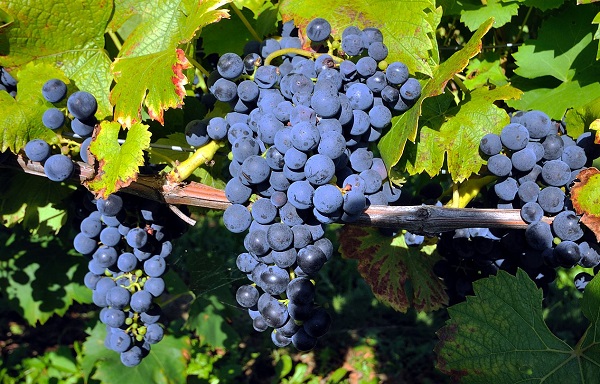About Pinot Noir
Pinot Noir DNA
Pinot Noir is believed to be a very old grape. It existed for at least 2000 years.
Probably due to this longevity, Pinot Noir is particularly prone to mutations and there are hundreds of different clones worldwide.
Pinot Noir (Pinot Nero in Italy), Pinot Blanc, Pinot Meunier, Pinot Précoce (Frühburgunder) and Pinot Gris are mutations of the same "Pinot" variety.
Pinot Noir is the parent of grape varieties such Gamay, Aligoté, Gouais Blanc and Chardonnay.
Terroir
Pinot Noir likes the limestone soils of Burgundy.
This limestone originated in the tropical sea that covered Burgundy 150 million years ago. In fact you can still find many shell fossils.
The hills which stretch from Chablis to Mâconnais, while passing the Côte de Nuits, the Côte de Beaune and the Côte Chalonnaise, were created and shaped by the formation of the Alps and the glacial periods which followed.
Burgundy’s subsoil is primarily composed of marl and limestone of Jurassic marine origin.
All the red Burgundy Grands Crus are located on the Côte de Nuits, except Corton Grand Cru, the only one which is located on the Côte de Beaune.
In Burgundy, when we talk about "climat", we do not raise our eyes to the sky, we drop them on the ground. (Bernard Pivot, writer).
Climat is a parcel of vineyard, carefully delimited and named, which has a long history and special geological and climatic conditions. Each wine from a "climat" has its taste and its place in the hierarchy of wines (Regional Appellation, Village, Premier Cru, Grand Cru).
The Climats are over 1000 and the most famous are: Chambertin, Romanée-Conti, Clos de Vougeot, Montrachet, Corton, Musigny.
Clos is a Climat surrounded by walls. In the Middle Ages a "clos" belonged to a monastery or a rich family.
Pinor Noir Vinification
This red grape can be vinified in red, rosé and sparkling wines.
We all know that Chardonnay is the main grape for the Champagne production, but, it is Pinot Noir the most planted grape in the Champagne region and it is a major ingredient in many Champagne and Franciacorta sparkling wines and especially in Blanc de Noir which means white (wine) made from 100% black (grapes).
Champagne producers press the skin off the grapes right away to not retain color and tannins. By quickly separating the skins from the juice you prevent the black pigment to be transferred to the wine.
Some producers make Pinot Noir with a technique called "Whole Cluster Fermentation", where the entire grape bunch, including the stems, goes into the fermentation. This adds extra tannins to the wine.
